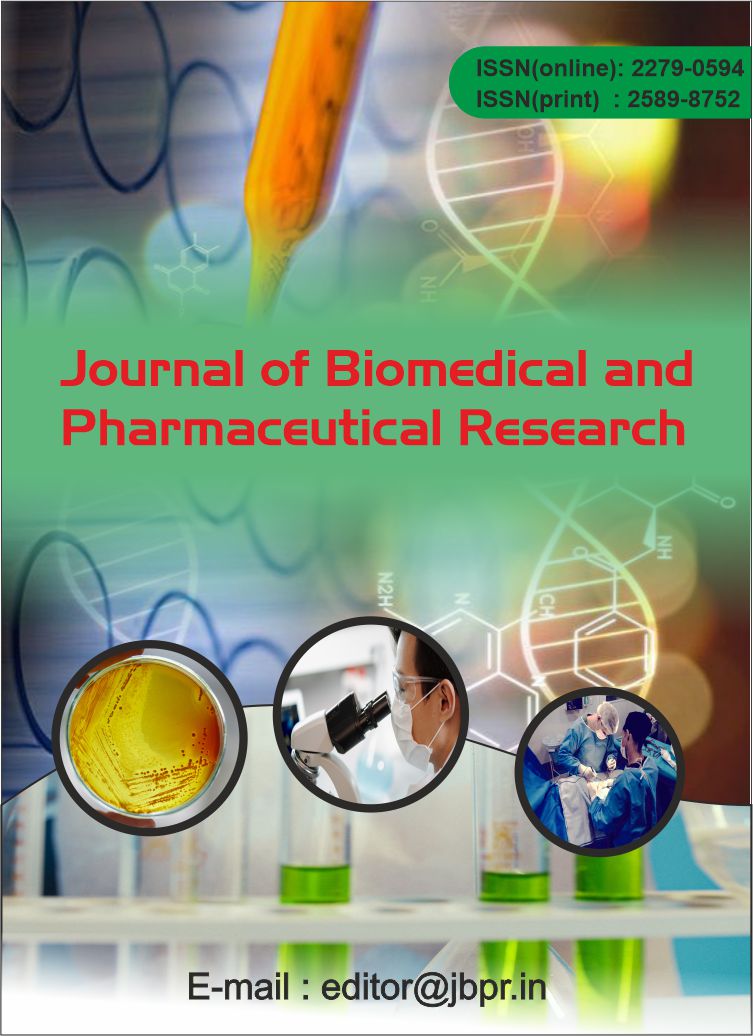To Examine the Eye-Related Effects in Children with Diabetes
Abstract
Background: Diabetes mellitus, both Type 1 and Type 2, significantly impacts various organs, including the eyes. Diabetic eye complications, such as diabetic retinopathy, macular edema, glaucoma, and cataracts, can impair vision and affect the quality of life in children. Early detection and management are crucial to prevent or mitigate these complications. This study aims to assess the prevalence and severity of eye-related effects in children with diabetes and explore the relationship between these effects and glycemic control. The prevalence of diabetic retinopathy (DR) in children with Type 1 diabetes, although less common compared to adults, still presents a notable risk. DR can lead to severe vision impairment if not detected and treated early. Poor glycemic control, indicated by elevated HbA1c levels, is a major risk factor for the development and progression of diabetic eye complications. Maintaining tight glycemic control is crucial in reducing the risk of these complications. Advances in imaging technologies, such as optical coherence tomography (OCT) and fundus autofluorescence, have improved the ability to detect early changes in the retina and other ocular structures.
Aim: The primary aim of a study examining eye-related effects in children with diabetes generally focuses on understanding the impact of diabetes on ocular health in this population.
Material and Method: A cross-sectional study was conducted involving children diagnosed with Type 1 or Type 2 diabetes. Participants underwent comprehensive eye examinations, including assessments of visual acuity, intraocular pressure (IOP), tear production (Schirmer test), tear film stability (break- up time, BUT), central corneal thickness (CCT), and corneal tear meniscus volume (TMV). The results were compared to those of a control group of healthy children. Additionally, the study analyzed correlations between eye parameters and diabetes-related factors, such as HbA1c levels and duration of diabetes. Retinal images captured using fundus photography and analyzed for signs of diabetic retinopathy. Blood glucose levels and HbA1c measurements taken every 3 months.
Results: The result shows that children with diabetes exhibit some notable differences in eye-related parameters compared to children without diabetes. Specifically, they tend to have higher intraocular pressure, reduced tear production, thinner central corneal thickness, and thinner central retinal thickness. These differences highlight potential eye health concerns associated with diabetes in children and underscore the importance of regular eye examinations for managing and monitoring these potential complications. Result Show weak or no significant correlations with most eye-related parameters. The significant negative correlation with central corneal thickness, suggesting that poorer glycemic control may lead to thinner corneas. The correlations with other parameters are generally weak and not statistically significant, except for an extremely high correlation with TMV, which is unusual and not statistically significant.
Conclusion: In conclusion, eye-related effects in children with diabetes represent a significant area of concern, with potential impacts on vision and quality of life. The prevalence of diabetic retinopathy, macular edema, glaucoma, and cataracts highlights the need for vigilant monitoring and comprehensive
![]() Journal of Biomedical and Pharmaceutical Research by Articles is licensed under a Creative Commons Attribution 4.0 International License.
Journal of Biomedical and Pharmaceutical Research by Articles is licensed under a Creative Commons Attribution 4.0 International License.





